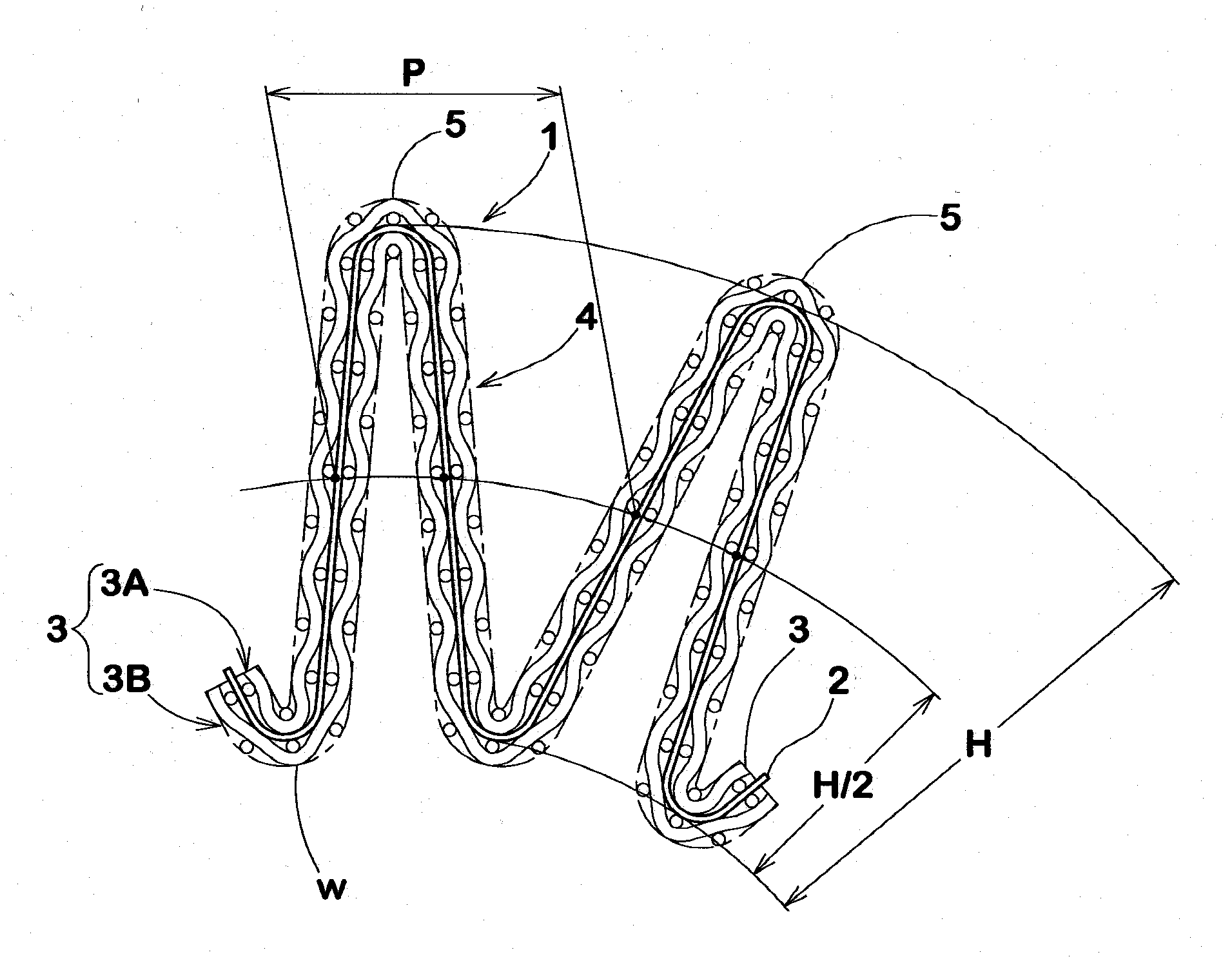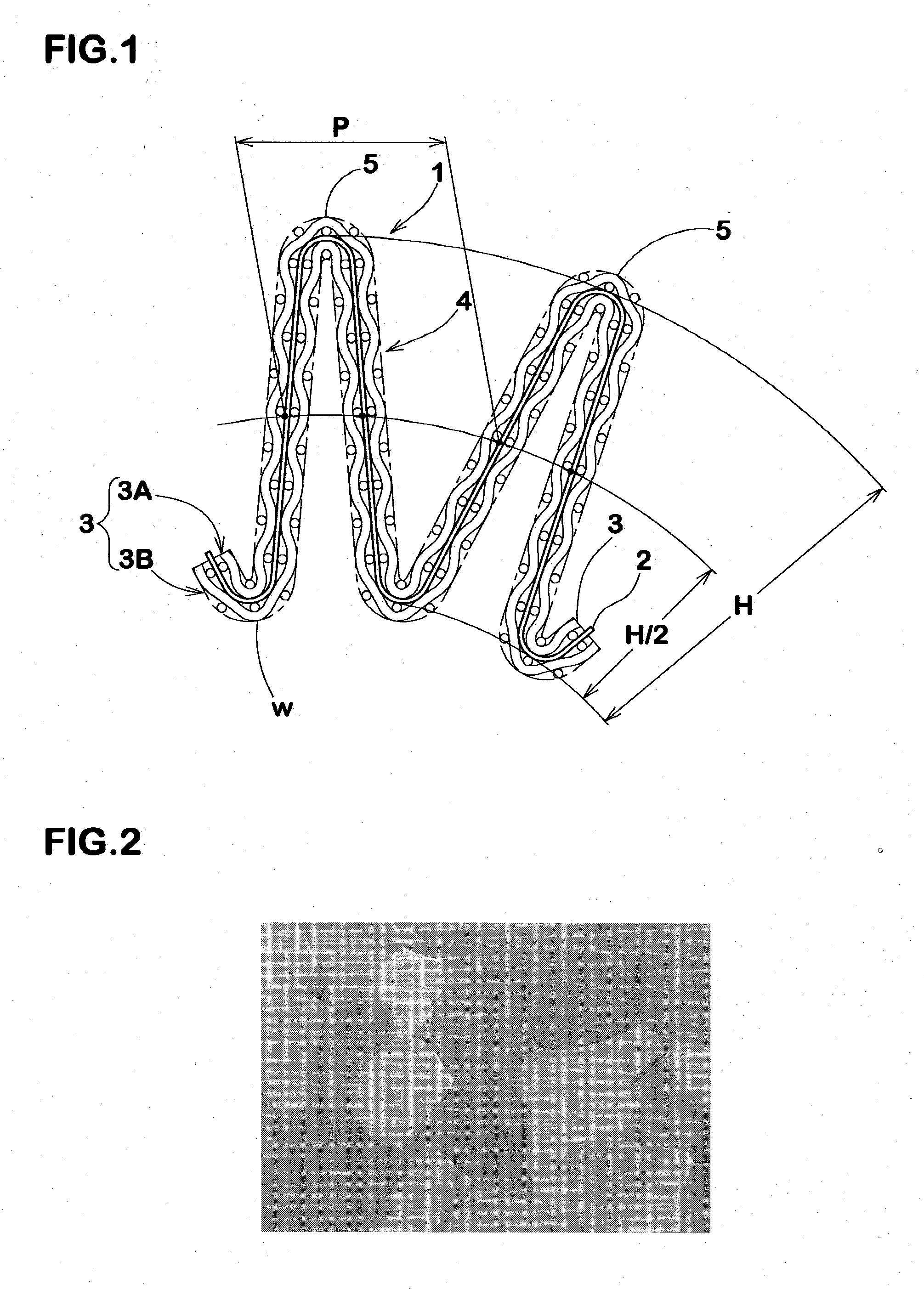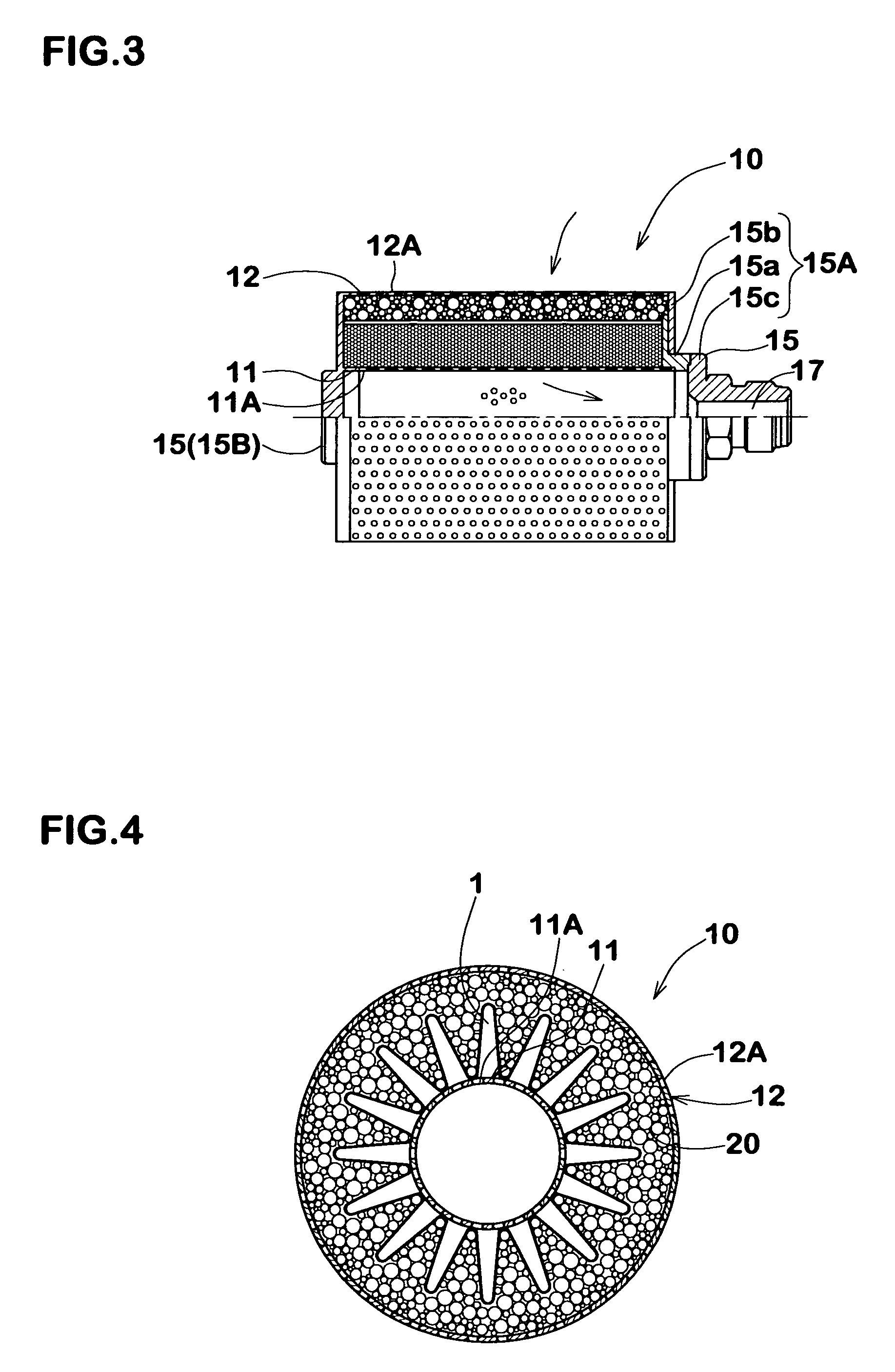Composite membrane material for hydrogen separation and element for hydrogen separation using the same
a technology of hydrogen separation and composite membrane, which is applied in the direction of membranes, separation processes, physical/chemical process catalysts, etc., can solve the problems of troublesome maintenance of plants, high cost of plants, and purity of obtained hydrogen gas, so as to improve the efficiency of hydrogen separation treatment and prevent the influence of performance degradation. , the effect of high accuracy
- Summary
- Abstract
- Description
- Claims
- Application Information
AI Technical Summary
Benefits of technology
Problems solved by technology
Method used
Image
Examples
example 1
[0079]A Pd-25% Ag metal foil having a size of 100 mm width×1 m length was prepared by cold rolling to a thickness of 20 μm and heat treatment at 1,050° C. to give a hydrogen-permeable membrane. Shape-retention meshes (#100) made of a molybdenum wire having a diameter of 0.2 mm were superposed on the both surfaces of the membrane, and the resulting laminate is set up in a pleat forming machine. This three-layer laminate was pleated to form continuous pleats having a ridge height of 20 mm and a center pitch of 6.5 mm, thus providing a pleated composite membrane material. A Pd—Ag alloy plate which was purified by vacuum melting to a purity of 99.91% and processed by repeating rolling and heat treatment was used as a raw material of the above-mentioned Pd—Ag alloy.
[0080]In this state, the hydrogen-permeable membrane and the shape-retention meshes were in close contact with each other, although they were in a non-bonded state. Return such as spring back was scarcely observed and pleat sh...
PUM
| Property | Measurement | Unit |
|---|---|---|
| thickness | aaaaa | aaaaa |
| melting point | aaaaa | aaaaa |
| thickness | aaaaa | aaaaa |
Abstract
Description
Claims
Application Information
 Login to View More
Login to View More - R&D
- Intellectual Property
- Life Sciences
- Materials
- Tech Scout
- Unparalleled Data Quality
- Higher Quality Content
- 60% Fewer Hallucinations
Browse by: Latest US Patents, China's latest patents, Technical Efficacy Thesaurus, Application Domain, Technology Topic, Popular Technical Reports.
© 2025 PatSnap. All rights reserved.Legal|Privacy policy|Modern Slavery Act Transparency Statement|Sitemap|About US| Contact US: help@patsnap.com



